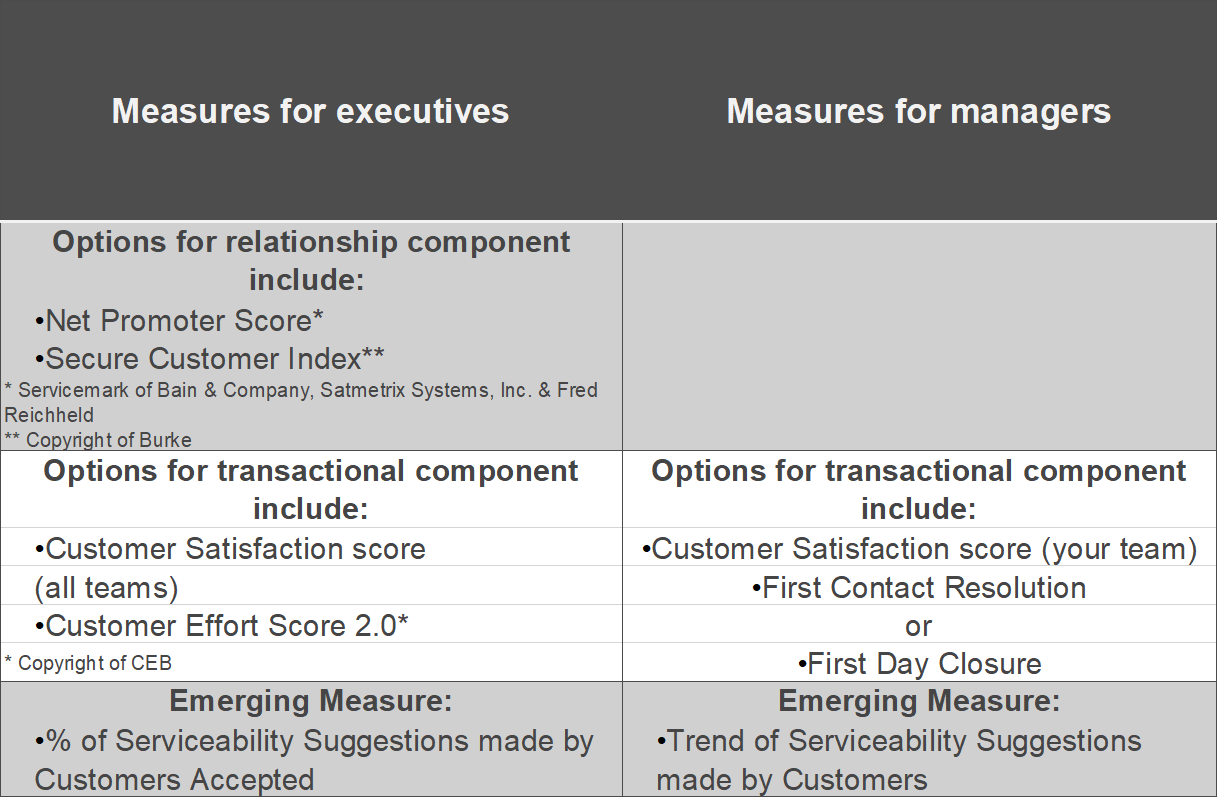This is part two of a six-part series on each of the Categories of Focus suggested by the new standard Open Customer Metrics Framework (OCMF). Learn more about this modern, open framework and its five categories of focus in my first post on this topic.
OCMF suggests that executives should spend about 20% of their time on the needs of the customer, which we’ll walk through here.
A good measurement system:
- is simple enough to focus attention on a few key elements.
- is fair enough so that people at every level believe they can affect the measures.
- facilitates an environment of learning and dialogue – not of control and compliance.
The framework suggests that the Customer category should take about 20% of your time as an executive. Don’t worry, because this framework is balanced, you will see how this all ties in nicely together.
There are measures for executives, and measures for managers. You’ll note there aren’t any measures for team members. This is intentional. It would have been too difficult to address this at the individual level given all the differences in regulations, and in terms of what works culturally across the globe. However as a general direction, they shouldn’t be too different from those of managers.

See the full list at: www.ocmfgroup.org
For the relationship component:
We suggest a portion of your time is spent looking at a relationship component – use something like a Net Promoter Score or Secure Customer Index. Note that there is no corresponding manager measures, since they can’t directly impact or manage these relationship components.
For the transactional component:
We suggest a portion of your time is spent looking at a transactional component like a Customer Effort Score or a Customer Satisfaction score (CSat).
Begin strong personal opinion here:
For all that is good in humanity, please do not use Customer Satisfaction scores, particularly those of you that over-rely on ‘CSat’ as the main proxy for how customers think about us.
There are so many reasons not to. Here’s one. In many organizations, perhaps 20% of the customer base ever contacts your organization directly with an issue. (The rest look for solutions themselves or ask another person — the proverbial ‘Hey Joe’ or ‘Hey Jane’ support.) Of that 20%, perhaps 20% respond to your plaintive pleas to return a customer satisfaction survey and we know most are strongly biased one way or the other. And yet many executives think this is the main number they should focus on. (Many of the Net Promoter Score (NPS) fans think NPS is the chosen metric. Neither is sufficient for those of us running customer-facing organizations.)
End strong personal opinion
For managers, consider looking at First Contact Resolution or First Day Closure (if your organization has particularly complex cases to solve). Both are good proxies for what you are trying to measure.
For the Emerging component:
First, a definition. Emerging measures may not initially be highly valid or reliable, but are relevant. Think directionally correct instead of completely right.
We suggest a portion of your time is spent looking at an emerging component precisely because we have to get past the traditional measures of the past century.
In the customer category, the ’emerging measure’ is the % of suggestions made by customers that are accepted.
Customer Support has the broadest set of interactions with customers of any group in the organization, and only a tiny percentage of them makes a suggestion. So when someone does make a suggestion, we should carefully listen to them and do something with what they say.
A simple rule of thumb is that for every time a customer encounters a problem, there is a 20% hit to loyalty. In other words, for every five customers who have problems, one will leave the next time they have a purchase opportunity.
— John A. Goodman, Customer Experience 3.0
Why wouldn’t we, as executives with ‘customer’ in our titles or job descriptions — be held accountable for all suggestions made by customers? Create a simple process to cultivate and capture them and a mechanism for following through and sharing the findings with other departments. After all, if you are accountable for customer success or customer experience, who better to deal with their suggestions?
Call to action
- Learn how your measures stack up against the Open Customer Metrics Framework with a free OCMF self-assessment (released under a Creative Commons license) from Klever Insight.
- Join the Open Customer Metrics Framework LinkedIn group and share your journey.

